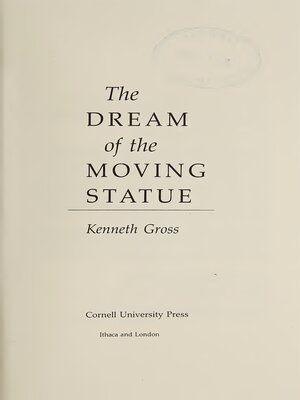
Sign up to save your library
With an OverDrive account, you can save your favorite libraries for at-a-glance information about availability. Find out more about OverDrive accounts.
Find this title in Libby, the library reading app by OverDrive.



Search for a digital library with this title
Title found at these libraries:
| Library Name | Distance |
|---|---|
| Loading... |
The fantasy of a sculpture that moves, speaks or responds, a statue that comes to life as an oracle, lover, avenger, mocker, or monster—few images are more familiar or seductive. The living statue appears in ancient creation narratives, the myths of Pygmalion and Don Juan, lyric poetry from the Greek Anthology to Rilke, and romantic fairy tales; it is a recurrent theme in ballet and opera, in philosophy, psychoanalysis, and film. What does it mean for the statue that stands immobile in gallery or square to step down from its pedestal or speak out of its silence? What is it in this fantasy that animates us?
Kenneth Gross explores the implications of fictive statues in biblical and romantic narrative; in the poetry of Ovid, Michelangelo, Blake, Rilke, and Stevens; in the drama of Shakespeare; in the writings of Freud and Wittgenstein. He also considers their place in the poetry of such contemporaries as Richard Howard and the films of Charlie Chaplin, Frarnçois Truffaut, and Peter Greenaway. In the motif of the moving statue, we can see how the reciprocal ambitions of writing and sculpture play off each other, often producing deeply paradoxical figures of life and voice. Stories of the living statue point to the uncertain ways in which our desires, fantasies, and memories are bound to the realm of unliving objects. Clarifying the sources of our fascination with real and imaginary statues, this book asks us to reconsider some of our most basic assumptions about the uses of fantasy and fiction.
Eloquent and evocative, The Dream of the Moving Statue will capture and hold a wide audience.







